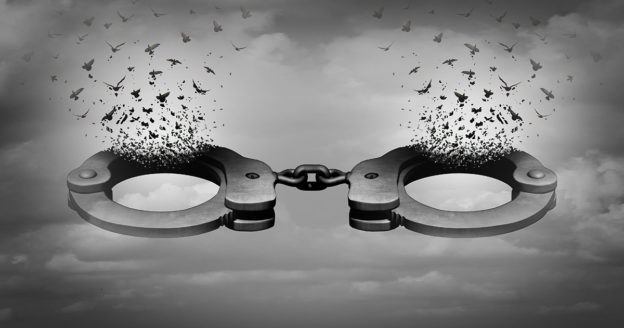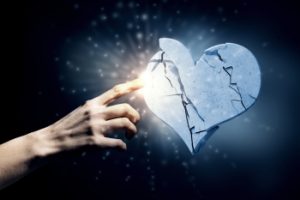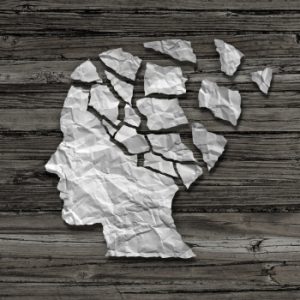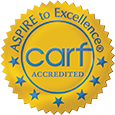Trauma occurs to everyone. It is subjective and relative to each person’s experience. Some psychologists refer to trauma as Big “T” and little “t” trauma, referencing the severity of trauma and the impact it has had on an individual’s life. When compounded, people who have experienced trauma are at a higher risk of developing health complications, substance use disorders, and co-occurring mental health concerns.
Big “T” trauma is often associated with post-traumatic stress disorder (PTSD) and most commonly is considered complex trauma. This includes experiences such as war, natural disaster, sexual violence, serious injury, or any other life-threatening experiences. This type of trauma not only affects the directly impacted but includes witnesses to. This particularly includes first emergency responders such as paramedics or police officers as well as helping professionals such as therapists due to their frequent encounters with emotional shock.
Little “t” traumas can be personally distressing events that affect individuals on a micro level though are considered simple or not outside the scope of typical life experiences. This could include bullying or harassment, a loss of a friendship, emotional abuse, death of a pet, or non-life-threatening injuries. The degree of resiliency that people possess varies which leads to varying depress to with people cope with little “t” traumas. What can be highly stressful to one person may not elicit the same emotional response from another. When we look at the impact of little “t” trauma, we look at the emotional response of the person affected rather than the event itself.
We humans have the instinct avoid pain and as children we instinctively do whatever we need to do to push away from the pain that is inflicted on our developing sense of self. If we push away hard enough and long enough, we begin to disown parts of our experience and even parts of ourselves. Often these parts come into conflict with one another creating internal distress and emotional conflict with ourselves and others. In recovery, we begin to focus on a process of integration and reintegration to bring these parts of ourselves back together into a new, whole version of us.
Recovery from childhood trauma begins when we stop pushing away and begin to own our experiences. This process can be painful but ultimately proves to be less painful than continuing on with the separation from self and separation from Source that we have lived with. All of our instincts tell us that we must avoid this path, however when we tap into truth we start to experience freedom.
Thinking of ourselves as three separate selves can help; the wounded self (the inner child), the adult self, and the higher self. The wounded self is where we can still feel and experience the shame, fear, and despair that was generated at the time of the trauma/s. This self is often limited in its perspective and will often blame itself for the trauma experienced. Because we spent a great deal of our lives pushing away pain, we spent a great deal of our coming-of-age pushing away this self. As a result we are far less conscious of this self which consequently leads to it having a greater, unknown impact on our adult lives. This part of us is often insecure and emotionally reactive, frequently reinforcing the deeply held negative beliefs that we hold over ourselves. This part of us is the part that is starving for love.
The adult self is the judgmental self. The most in charge for reinforcing our Ego, this self is the one that consciously wants to remain in charge and control everything, both internally and externally. The adult self sees the wounded self as too overwhelmed with emotion and pain which could lead to loss of self-control at any moment, therefore needing to be controlled tightly. The adult self seeks to provide reliability and safety in order to avoid the pain experience in childhood. The problem is that when judgement is utilized it automatically creates a separation from the wounded self as well as the higher self. This continuous separation only exacerbates and reinforces the internal dysfunction that causes us unrest. The solution to this dysfunction created by our adult selves is not to banish and push away the wounded part of ourselves but rather to face, address, and heal the fear and shame from which the adult self is trying to protect us from.
The higher self is the part of us that is observing, holding deep compassion and love for ourselves and others. This part of us is able to respond to both the wounded self and the adult self with kindness, wisdom, and understanding. Early in recovery this part of us may seem anorexic or even nonexistent. However, when we think of the compassion and understanding we often have for others we find that this part of us has been present all along. The difference is that what we express and feel towards others we often do not apply to ourselves. A vital part of our recovery is to become capable of taking in grace and compassion from Source and from others and to become capable of extending grace and compassion towards ourselves. Accepting love and compassion from others may be difficult at first and feel odd because we have been starving our higher selves up until now. But as we continue to be nourished, we will grow this part of us so that our capacity is strengthened.
Of course these three internal states cannot be considered a comprehensive picture of what makes up us, for we are more complex than this. However, focusing on healing our own wounds through this lens can give us a great deal of clarity and more certainty as we move forward in the recovery process. In this process we develop awareness into our internal states, take ownership of our experiences, and begin integrating the parts of us in conflict with one another to better know wholeness and peace. Each of these steps can be painful and none can be done alone. We need support and we need a relationship with something greater than ourselves and our own experiences to help us through. The universe, we will find, is eager to show us directly and personally how deeply loved and valued we truly are.
There are many great resources to begin utilizing at any stage of your spiritual growth in conjunction with a recovery program to address some of these issues we are talking about. We will attach a link at the bottom of each blog post in this series to a resource here in Los Angeles that may be helpful to you.
Check out Rudy and Kelly Castro’s coaching partnership focusing on individual and couple counseling to address core issues such as trauma, relationship dysfunction, communication, spiritual growth, and so much more: https://www.consciouspartnershipcoaching.com/








